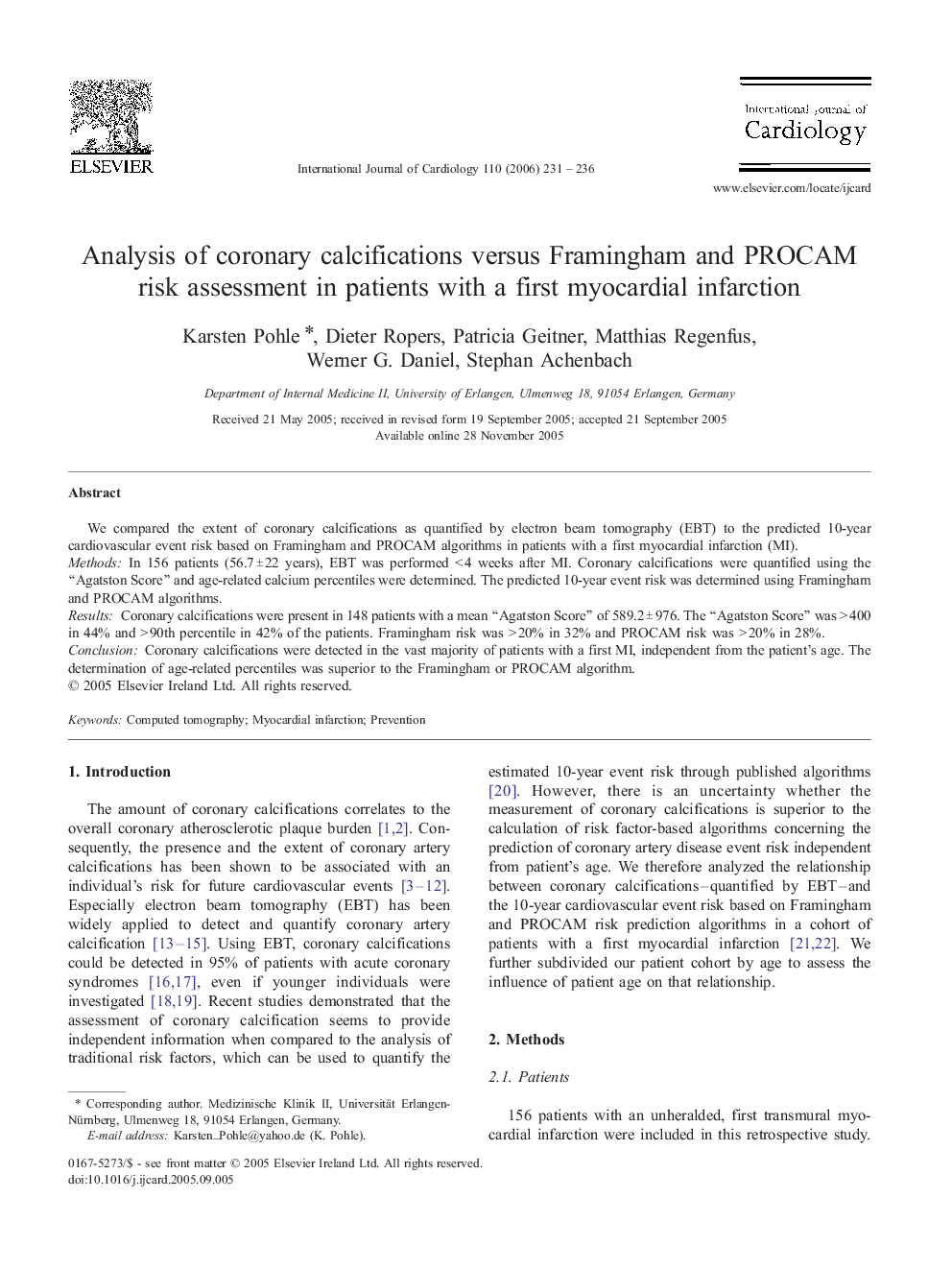| Article ID | Journal | Published Year | Pages | File Type |
|---|---|---|---|---|
| 2936305 | International Journal of Cardiology | 2006 | 6 Pages |
We compared the extent of coronary calcifications as quantified by electron beam tomography (EBT) to the predicted 10-year cardiovascular event risk based on Framingham and PROCAM algorithms in patients with a first myocardial infarction (MI).MethodsIn 156 patients (56.7 ± 22 years), EBT was performed < 4 weeks after MI. Coronary calcifications were quantified using the “Agatston Score” and age-related calcium percentiles were determined. The predicted 10-year event risk was determined using Framingham and PROCAM algorithms.ResultsCoronary calcifications were present in 148 patients with a mean “Agatston Score” of 589.2 ± 976. The “Agatston Score” was > 400 in 44% and > 90th percentile in 42% of the patients. Framingham risk was > 20% in 32% and PROCAM risk was > 20% in 28%.ConclusionCoronary calcifications were detected in the vast majority of patients with a first MI, independent from the patient's age. The determination of age-related percentiles was superior to the Framingham or PROCAM algorithm.
